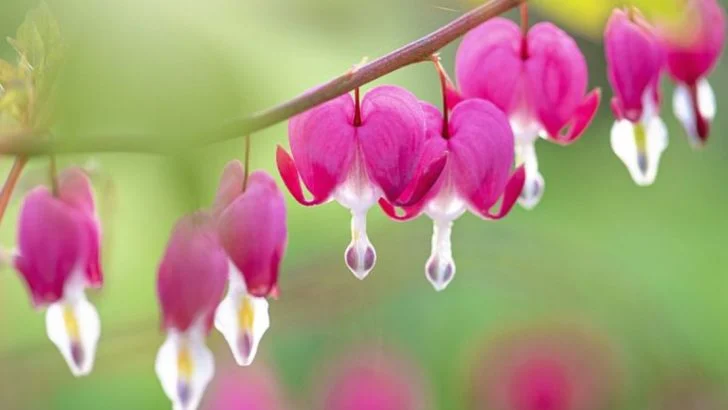Some plants are memorable not just for how they look—but for what they’re called. Whether it’s quirky, poetic, or downright strange, these unforgettable plant names are guaranteed to make you smile, raise an eyebrow, or do a double take.
In this article, we’re highlighting 20 plants with the most unique, funny, and eye-catching names you’ll come across in the gardening world. From the whimsically named “Sneezewort” to the oddly charming “Hot Lips”, these botanical oddities are conversation starters before you’ve even planted them.
So if you’re looking to add character to your garden—or just want a few laughs along the way—these plants will give your green space a personality all its own.
Bleeding Heart

With blossoms resembling tiny hearts dripping with tears, the Bleeding Heart is both poetic and enchanting. This plant’s common name perfectly captures its stunning, unique blooms. It thrives in cool, shaded areas, adding a touch of romance with its pendulous flowers.
Gardeners often cherish it for its early spring display, as it heralds the season’s change with a burst of color. Known scientifically as Dicentra spectabilis, it is a darling in cottage gardens and woodland settings. Its delicate appearance belies a resilience that makes it a favorite among plant enthusiasts.
Devil’s Tongue

Named for its long, tongue-like spadix, Devil’s Tongue is a plant that commands attention. Its dramatic structure includes a towering central spike surrounded by a sheath called a spathe. This intriguing plant, also known as Amorphophallus konjac, is not only memorable for its name but also its bold, exotic look.
While infamous for emitting a strong odor when in bloom, it plays a vital role in attracting specific pollinators. Gardeners with an eye for the unusual often cultivate it for its striking appearance and unique pollination strategy.
Snake Plant
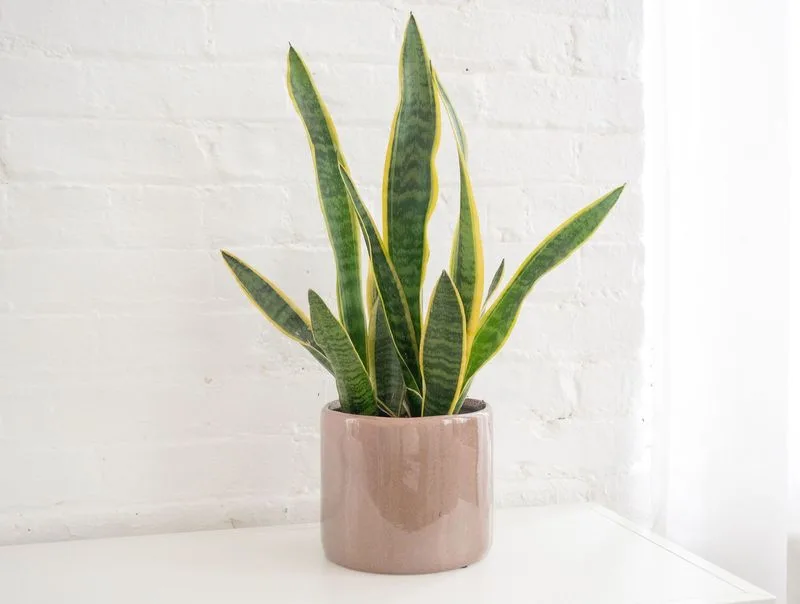
Known for its upright, sword-like leaves, the Snake Plant is as hardy as it is visually striking. Often called Mother-in-Law’s Tongue, this plant is beloved for its easy-care nature and architectural flair.
Perfect for modern interiors, it can thrive on neglect and low light. Its air-purifying properties make it a popular choice for improving indoor air quality. Scientifically known as Sansevieria trifasciata, it’s appreciated by both novice and expert gardeners for its resilience and minimal watering needs.
Kangaroo Paw
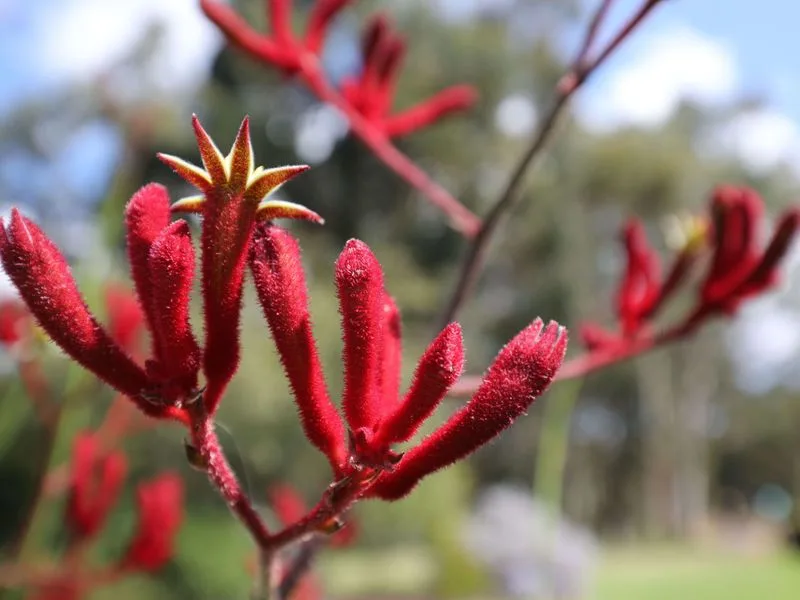
The Kangaroo Paw’s name is derived from its flower’s unusual shape, reminiscent of a kangaroo’s paw. Native to Australia, this plant captivates with its vibrant, tubular blooms that rise above strap-like leaves.
Its flowers are not only a visual treat but also attract a variety of pollinators, including birds. Ideal for xeriscaping, it thrives in sunny, well-drained environments. Anigozanthos, its scientific name, makes a statement in gardens with its striking coloration and distinct form.
Bunny Ears Cactus
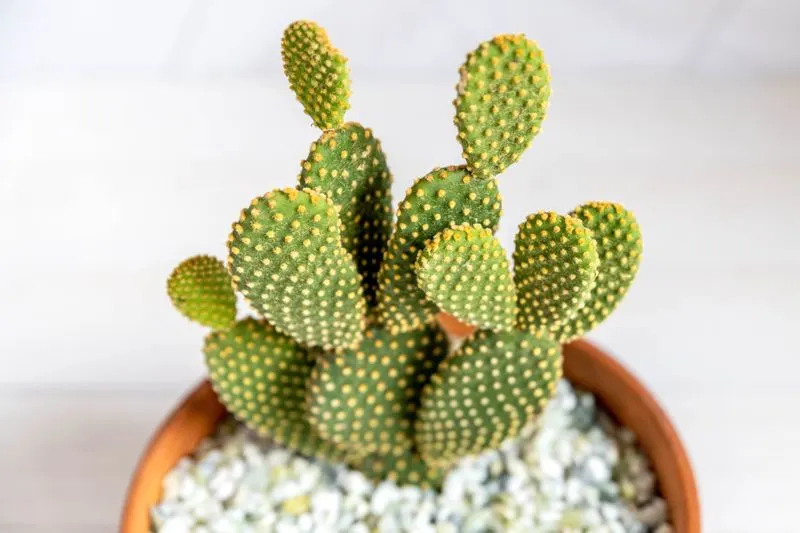
The Bunny Ears Cactus delights with its whimsical appearance. Its furry pads look just like rabbit ears, inviting a closer look with each new growth.
Despite its cute name, this cactus is equipped with tiny spines that require careful handling. It thrives in bright light and dry conditions, making it a low-maintenance indoor plant. Known scientifically as Opuntia microdasys, it’s perfect for those who enjoy a desert touch in their home decor.
Elephant Ear
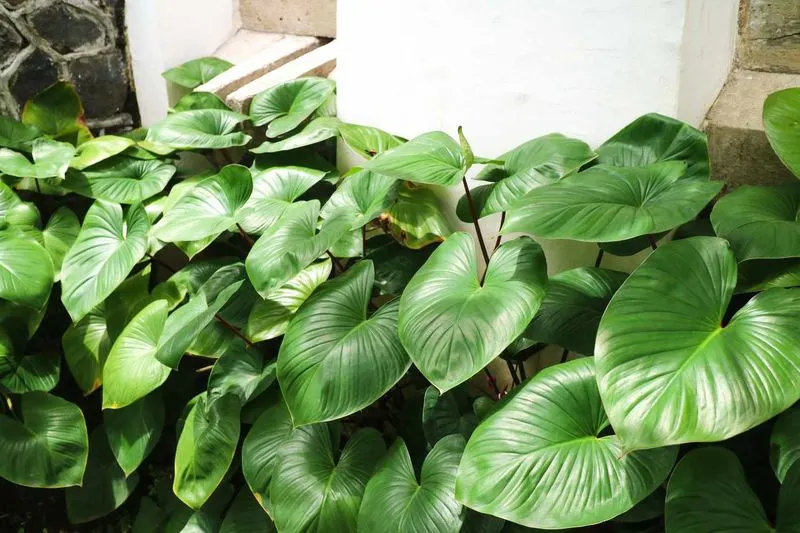
Elephant Ear plants are named for their gigantic, heart-shaped leaves that can resemble the ears of their animal namesake. These dramatic leaves make them a favorite in tropical-themed gardens.
While they thrive in warm, humid environments, they can also be grown in containers indoors. With the scientific name Colocasia, they add an exotic touch to any planting scheme. Their lush foliage creates a striking backdrop in both indoor and outdoor spaces.
Lamb’s Ear

With foliage as soft as its name suggests, Lamb’s Ear is a plant that invites touch. Its velvety, silver leaves create a soothing presence in any garden.
Ideal for edging and ground cover, it adds texture and interest to borders. This plant, scientifically known as Stachys byzantina, is drought-tolerant and easy to grow, making it a popular choice for gardeners looking to add a tactile element to their landscapes.
Ghost Plant
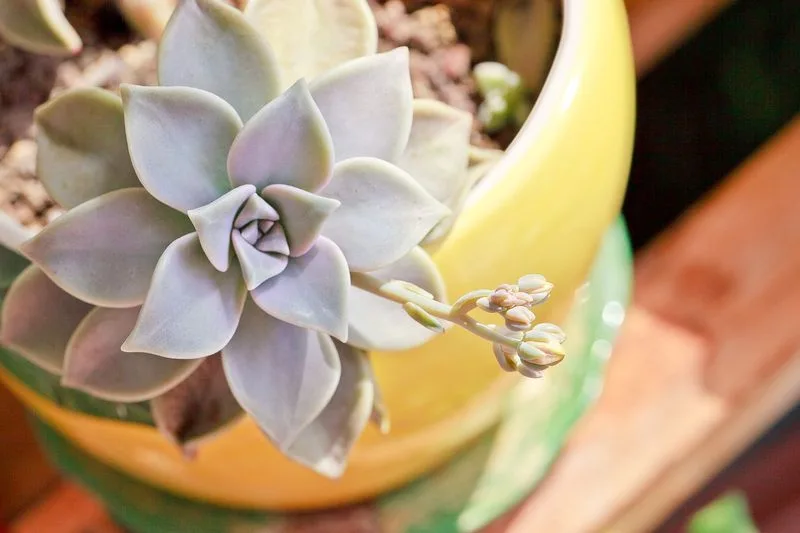
The Ghost Plant’s ethereal appearance gives it an otherworldly charm. Its pale, plump leaves seem to glow, especially when touched by sunlight.
This succulent, known as Graptopetalum paraguayense, thrives in well-draining soil and bright light. It’s a favorite among those who enjoy the beauty of succulents without demanding care. The ghostly hue of its leaves can change with the seasons, adding subtle shifts in color to its mystical allure.
Spider Plant

Spider Plant’s cascading foliage creates a living waterfall of green and white. Its ability to thrive in various conditions makes it a beloved choice for homes and offices.
This plant, scientifically known as Chlorophytum comosum, is also celebrated for its air-cleaning properties. Easy to propagate, it produces offshoots or ‘spiderettes’ that dangle charmingly, ready to root. A perfect plant for those who appreciate easy care and attractive, trailing greenery.
Bird of Paradise

The Bird of Paradise blooms with flowers that mirror the flamboyance of tropical birds, standing as a symbol of freedom and joy. Its striking orange and blue flowers make a bold statement in any setting.
Known scientifically as Strelitzia reginae, it thrives in sunny spots with well-drained soil. As an indoor plant, it needs bright light to flourish, rewarding care with its breathtaking blooms. A favorite for those wanting a taste of the tropics at home.
Dinosaur Plant
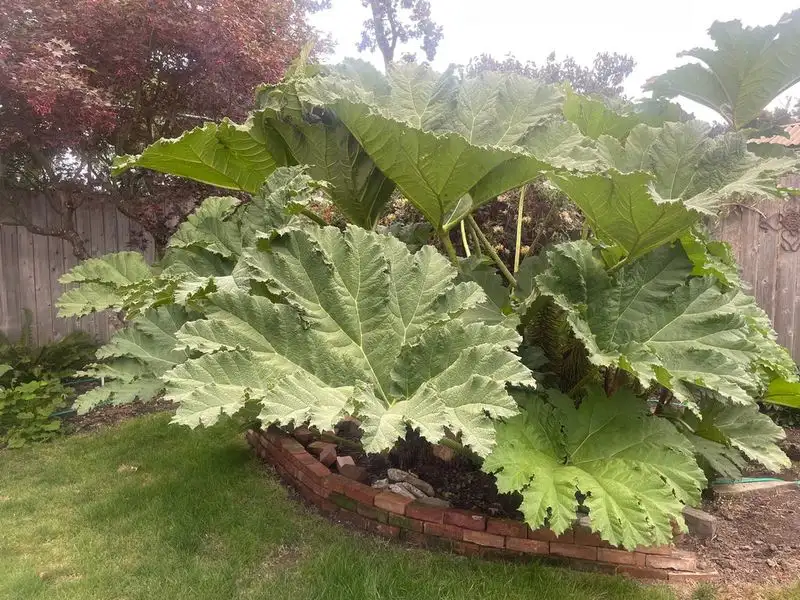
The Dinosaur Plant, with its name evoking ancient times, is a curiosity in the plant kingdom. It unfurls its fronds like a fern, providing a glimpse into prehistoric beauty.
Also called Selaginella lepidophylla, it’s known for its ability to survive extreme desiccation. When dry, it curls into a ball, reviving with water to its full greenery. This remarkable resilience makes it a fascinating addition to any collection, especially for those intrigued by botanical oddities.
Staghorn Fern

Staghorn Ferns captivate with their antler-shaped fronds, reminiscent of a stag’s majestic horns. These unusual ferns grow epiphytically, often mounted on boards or tree bark.
Known scientifically as Platycerium, they require indirect light and regular misting to maintain their lush, green appearance. Their unique growth habit and appearance make them a popular choice for vertical gardens and unconventional displays.
Corpse Flower
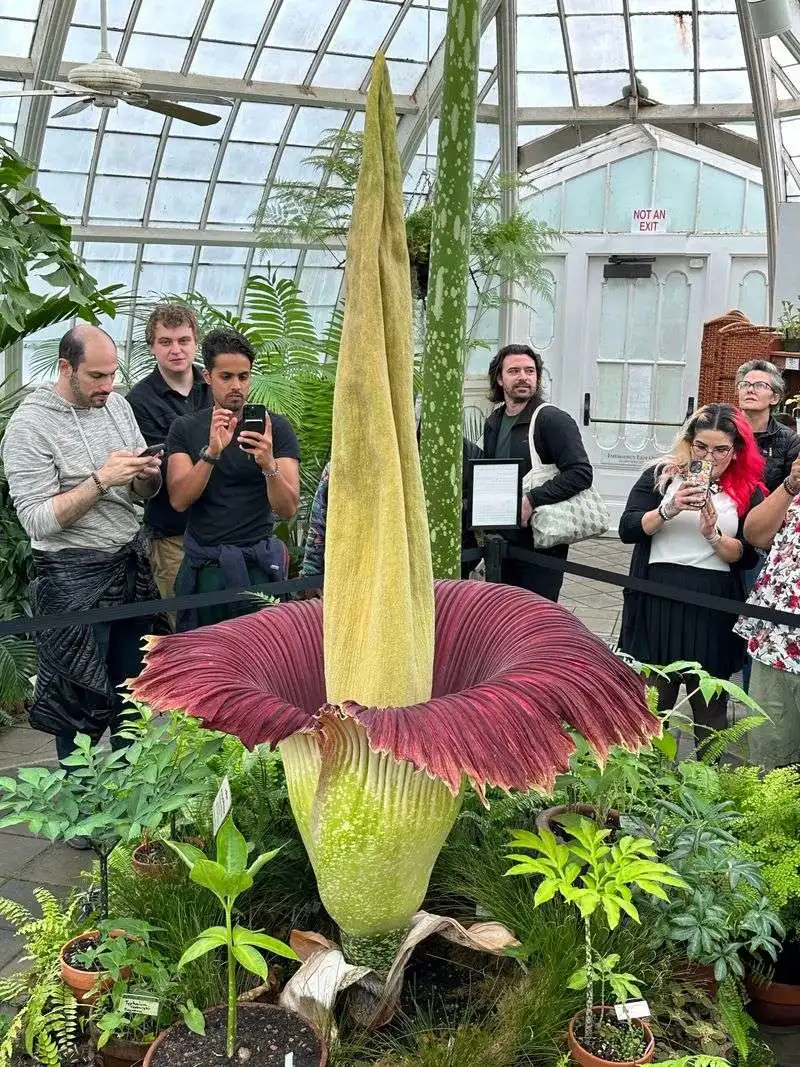
The Corpse Flower is notorious for its enormous bloom and powerful odor. When in bloom, it emits a scent reminiscent of rotting flesh, attracting carrion insects for pollination.
Despite its smell, it draws crowds due to its rarity and impressive size. Scientifically known as Amorphophallus titanum, it’s a marvel of nature that fascinates and repulses in equal measure, blooming only once every few years.
Monkey Puzzle Tree
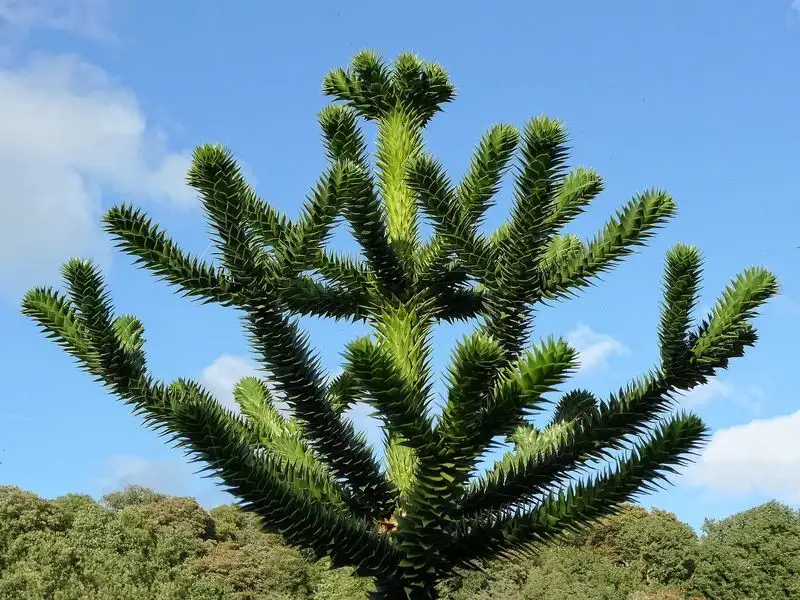
The Monkey Puzzle Tree stands tall with spiraling branches covered in sharp, scale-like leaves. Its unique structure earned it a name suggesting even monkeys would be puzzled to climb it.
Native to Chile, this evergreen is known scientifically as Araucaria araucana. It adds a distinctive silhouette to landscapes, appreciated for its architectural beauty and resilience. This tree is a conversation starter in any garden, intriguing all who encounter it.
Lady’s Slipper Orchid
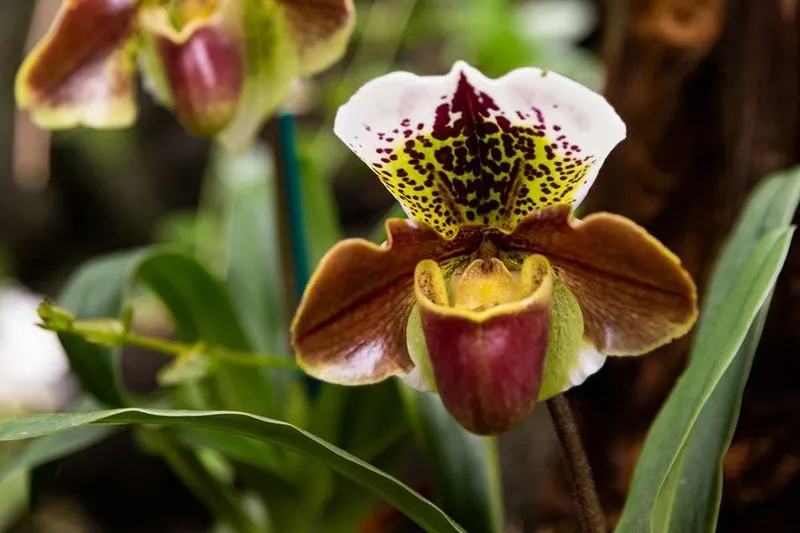
Lady’s Slipper Orchids enchant with their slipper-shaped blooms that seem almost otherworldly. Each flower resembles a delicate shoe, inspiring its charming name.
Known scientifically as Cypripedium, this orchid thrives in shaded, woodland environments. Its striking appearance and intricate structure make it a sought-after plant for orchid enthusiasts, offering a touch of elegance and intrigue to any collection.
Chocolate Cosmos
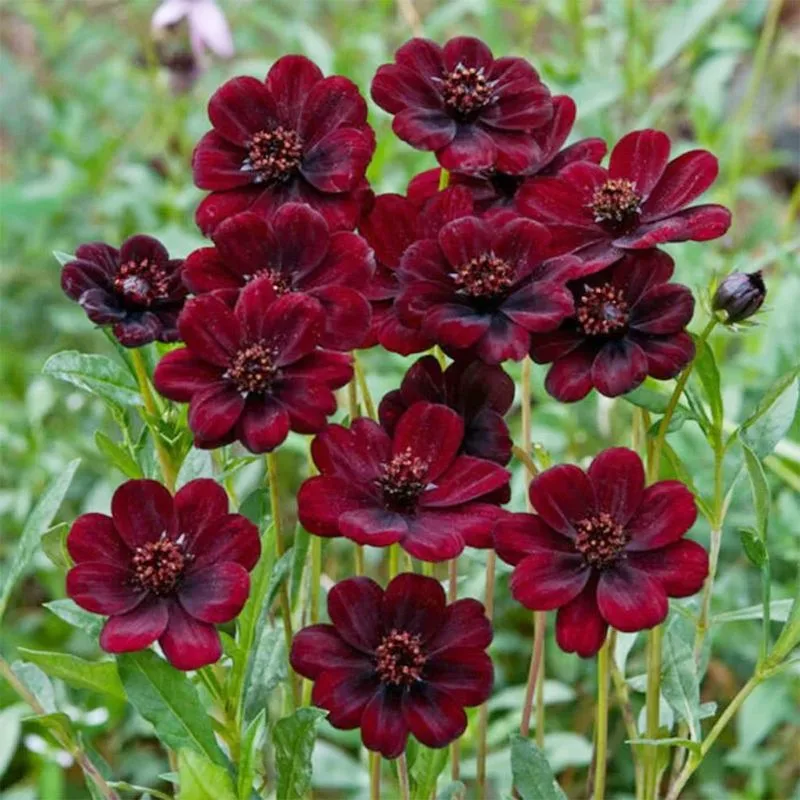
The Chocolate Cosmos tantalizes with its rich, velvety blooms that emit a subtle chocolate fragrance. Its dark maroon flowers are as captivating to the nose as they are to the eye.
Scientifically named Cosmos atrosanguineus, it flourishes in sunny spots with well-drained soil. This plant adds both visual and sensory delight to gardens, especially appealing to those with a penchant for unique, scented flowers.
Bat Flower
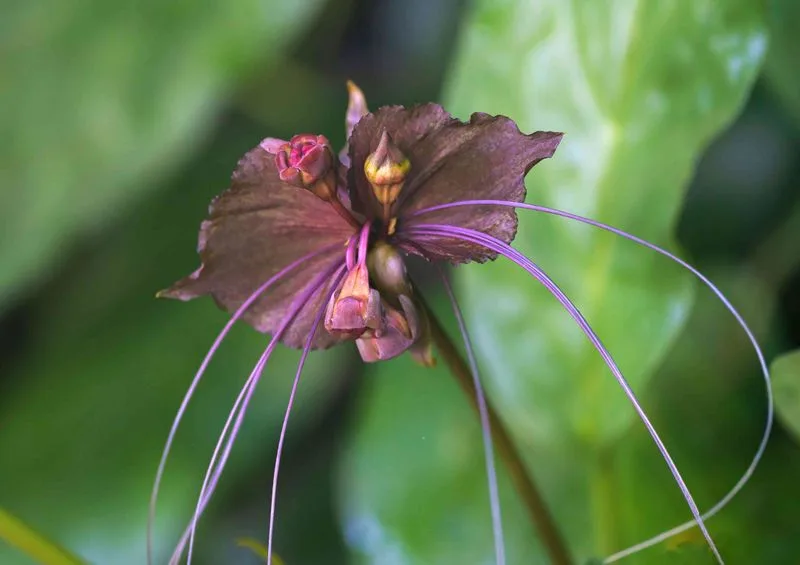
Bat Flowers intrigue with their dark petals and long whiskers, resembling a bat in flight. This mysterious plant captivates those who dare to venture into the more unusual side of botany.
Known as Tacca chantrieri, it thrives in warm, humid climates and requires shaded environments to flourish. Its exotic appearance makes it a favorite among collectors who appreciate its gothic charm and unique floral display.
Zebra Plant

Zebra Plants, with their bold white stripes, mimic the striking patterns of their animal namesake. These glossy leaves add an exotic touch to indoor spaces.
Known scientifically as Aphelandra squarrosa, it thrives in bright, indirect light and high humidity. Its vivid foliage is complemented by bright yellow flowers, adding a splash of color to its otherwise monochromatic palette. Ideal for those who appreciate a lush, tropical vibe indoors.
Foxglove

Foxglove’s towering spires of tubular flowers invite admiration and caution. The blooms, resembling the fingers of a glove, sway elegantly in the breeze.
Known scientifically as Digitalis, it thrives in partial shade and moist, well-drained soil. While stunning, it’s also highly toxic, adding a hint of danger to its beauty. Gardeners value it for its vertical interest and the way it attracts pollinators.
Venus Flytrap
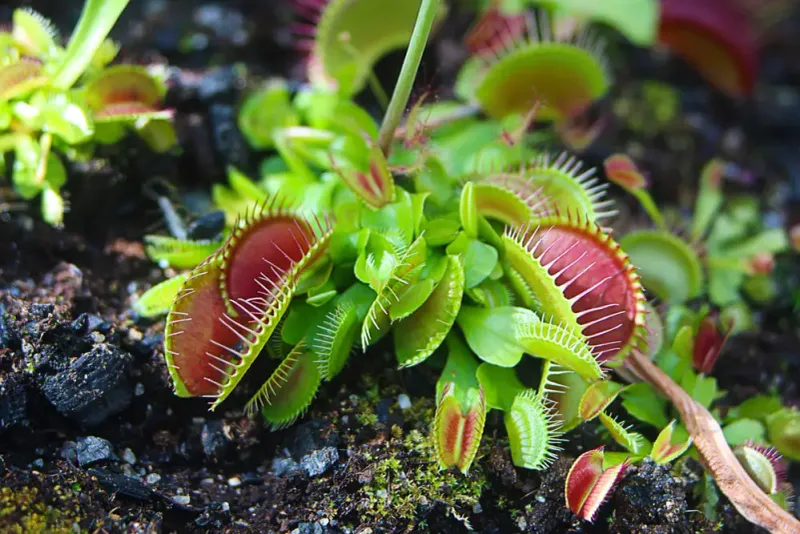
Venus Flytraps captivate with their jaw-like traps poised to snap shut on unsuspecting prey. This carnivorous plant draws fascination with its active feeding mechanism.
Known scientifically as Dionaea muscipula, it thrives in acidic, boggy soil and bright light. Its need for live nutrition sets it apart from typical houseplants, offering a dramatic glimpse into nature’s predatory tactics. Perfect for those intrigued by the plant world’s more aggressive side.

